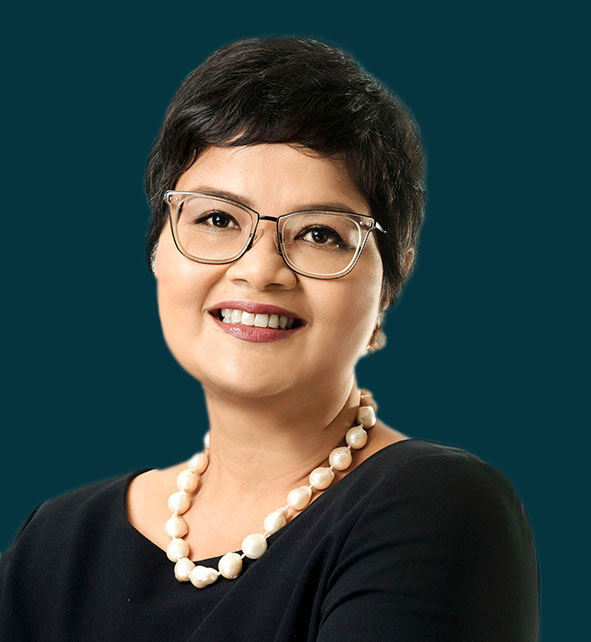All the runes are suggesting that the early part of this decade is going to see a surge in interest in managing general agents around the globe but particularly in Asia. We provide some background and solicit expert opinion on this latest development in the insurance industry.
For the uninitiated, managing general agents (MGAs) provide full underwriting and claims management services to their clients – often at a price that traditional insurers cannot match – and rely largely on commission income.
When they first emerged some decades ago there were concerns that they could operate on lower margins only by saving on essential back-office functions like record keeping that could have contributed to poor underwriting experiences – but today’s MGAs face much stiffer compliance and regulatory regimes and perform much better under the spotlight than their predecessors.
It is precisely these onerous legislative and regulatory requirements – coupled with capital requirements that place a burden on traditional insurers and reinsurers - that can make MGAs attractive to entrepreneurs looking at the insurance sector.
The art of specialisation
The traditional argument runs like this: Global insurers have become huge oil tankers constrained by burdensome compliance requirements on the one hand and yield-hungry shareholders on the other. This makes them formula-drive bean-counters with highly commoditised products and services – and some may have lost sight of what customers want.
MGAs, by contrast, are speedy little pilot craft that can zip in and out of the most profitable areas of the market - selling cheap and efficient bespoke insurance solutions that customers need.
Lloyd’s coverholders
Lloyd’s has already played a significant role in the development of the MGA sector in Asia, which it refers to as coverholders.

“The coverholder model is a core part of the Lloyd’s market,” said Lloyd’s of London (Asia) CEO Pavlos Spyropoulos. “Over 35% of the premium placed into Lloyd’s is produced by coverholders, and the model is prevalent in North America, Europe, Australia, New Zealand and South Africa.
“In most countries in Asia, regulatory frameworks do not recognise the MGA model, though this is beginning to change. Hong Kong has been a long standing and mature coverholder market for Lloyd’s and in 2016 the Monetary Authority of Singapore authorised Lloyd’s Asia Service Companies to delegate authority to coverholders in Singapore and in other countries where our licensing permits us,” Mr Spyropoulos said.
China’s regulator has also authorised Lloyd’s China to run a coverholder pilot, while in India the regulations that govern Lloyd’s onshore platform permit the establishment of coverholders.
“Lloyd’s continues to advocate for the development of the coverholder model in Asia, primarily by engaging with regulators in the region to encourage adoption of the model and share best practice on how other regulators and Lloyd’s itself oversee and regulate coverholders,” he said.
 Labuan as a centre
Labuan as a centreLabuan IBFC has also played a significant role in the development of MGAs in Asia as its CEO Farah Jaafar-Crossby explained to Asia Insurance Review.
“Labuan IBFC offers a license akin to MGA to facilitate (re)insurers as it allows access to specialist underwriting expertise which, in turn, provides for invaluable insights either in key industries or geographies,” Ms Jaafar-Crossby said.
“An MGA in Labuan IBFC is licensed as an underwriting manager and to date there are more than five who could potentially act as an MGA, out of a list of more than 20 license holders. And there are already global MGAs based in Labuan IBFC such as Nexus Structured Solutions and Aster Underwriting Agency,” she said.
“Globally, the concept of MGA is not new, however as markets in Asia evolve to become more developed, the model is definitely gaining traction. In fact, the Labuan International Insurance Association, with the assistance ofthe regulator, is looking to enhance the current MGA offering in the jurisdiction, as there demand from potential licensees due to the complete and deep insurance/reinsurance ecosystem in Labuan IBFC comprising of more than 220 license holders,” Ms Jaafar-Crossby said.
Future potential
The sector looks set to develop further in Asia in the next couple of years. “My expectation is that the MGA model will continue to develop in the region,” Mr Spyropoulos said. “Hong Kong will remain a dynamic coverholder market and I expect more MGAs to set up in Singapore, although I am aware that plans are on hold for a number prospective market entrants who are waiting for the COVID-19 outlook to stabilise.
“I am also hopeful that we will see more regulators in Asia amend their frameworks and/or launch pilots to introduce MGAs as they look to stimulate innovation in products and distribution in their markets,” Mr Spyropoulos said.
Ms Jaafar-Crossby is equally bullish. “With the hardening insurance market, (re)insurers are looking to extend their capabilities in new areas,” she said.
“While MGA is relatively small in Asia, outside the developed markets of Hong Kong, Singapore and Australia, the use of MGA as part of the distribution channel is becoming important. And as markets evolve and grow in this sector, so will Labuan IBFC which has always been holistically a wholesale risk intermediation centre, which fits perfectly with the very concept of MGAs.
“One area that I think is undervalued in the development of MGAs is technology. The risks associated with new technology such as cyber risks offer opportunities for MGAs in Asia. MGAs are able to react to market changes quicker than (re)insurance companies as they are acting on behalf of larger (re)insurers, allowing for risk to be potentially managed more efficiently, especially when there is a demand surge. Coupled with the effects of the recent COVID-19 pandemic, which has created an even harder market, it is more imperative than ever for MGAs to step up to ensure efficient risk transfer/cover,” Ms Jaafar-Crossby said.
Development of Singapore
“Singapore is a relatively small country and domestic market with a significant concentration of sophisticated insurers, reinsurers and brokers serving both regional and local clients,” Mr Spyropoulos said.
“This means that domestic clients and distributors enjoy outstanding access to capacity, and the local relationship element that MGAs offer in larger countries such as the US and Australia is less relevant. I believe that in order to succeed in Singapore MGAs need to provide niche products that are not widely available in the local and regional markets, and have the capability to distribute them efficiently or through a channel that offers access to a new client base.
“Insurers are acutely aware of the need to manage their distribution costs, so when it comes to backing MGAs, a critical consideration is whether the partnership will give them access to business that they would not otherwise have the capability to underwrite or access. Nonetheless, Singapore is an advanced economy with leading financial services, tech, maritime, and manufacturing sectors and a regional wholesale (re)insurance hub, which offers compelling opportunities for MGAs with innovative product and InsurTech capabilities,” Mr Spyropoulos said.
The LIBFC market
“Labuan IBFC is regulated by single facilitative regulator which is a statutory body under the purview of the Ministry of Finance Malaysia,” Ms Jaafar-Crossby said. “Just as important is the fact that, as a regulator with a deep appreciation of bespoke and niche market segments, MGAs considering Labuan IBFC as a domicile will be comforted by its business friendly and facilitative nature.
“This is an important aspect that has ensured the growth of the jurisdiction over the last 30 years. Indeed, Labuan IBFC is now the fastest-growing risk intermediation centre in Asia,” she said. A